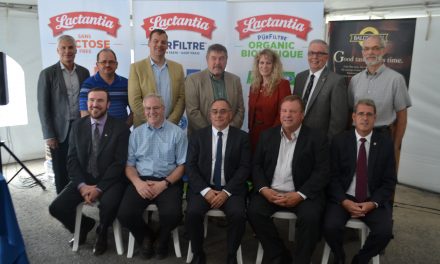by Jakob Vogel B.Sc. (Agr.)
Dairy Consultant
The key to an efficient and productive dairy, has and always will be reproduction. In order to make milk, we need our cows pregnant and calving properly. In order to maintain a steady production throughout the year – we need steady calvings and a stable days in milk. In order to achieve that, we need a couple of things to line up.
First of all, we need to make sure our transition cows are transitioning properly. By this I am referring to; a proper dry period, a good calving with few (ideally no metabolic issues) and less than 0.5 points of body score lost after calving. Note, we are talking about transition cows, not just “dry cows”. The invaluable theoretical 90 days is critical, not only for a productive lactation – but the likelihood of that cow staying in the herd to produce another subsequent lactation as well.
Secondly, we need to monitor cows and evaluate our voluntary waiting period (VWP). Is our waiting period too long? What is too long? Fortunately, there is no black and white answer for the VWP, the magic number if you will, can vary not only from farm to farm but also cow to cow. Tying back into the monitoring of fresh cows – not only for disease and problems but more importantly – for heats.
Target realistic goals and opportunities; re-evalute your herd’s values and current position with some of the following parameters; days open, days in milk, number of times bred, pregnancy rate, heat detection rate, and the list goes on. There may be money left on the table!
Unfortunately – these figures are not changed overnight and depending on your current situation can take anywhere from six months to one year to attain the goal repeatedly. Although it may take time to attain the “ideal”, we need to be working on improving these parameters.
Summertime can be hard; understanding that more extreme variations in climate are becoming more common, we, as an industry cannot begin to compromise our reproductive success on farm since few other areas are attached so closely to the profitability of the business. During the summer, and extreme periods of heat stress – additional strategies need to be taken into consideration in order to remain successful. Actively cooling our cows is the easiest and “cheapest” investments to be made. Figures dating back from 1999 (Arizona State University) showed that increased respiration rate (reaction to heat stress) has a direct impact on both production (eight per cent decrease) and the number of cows actually cycling (61 per cent of cows actively cooled vs. 10 per cent in the control group). Active cooling can be done by adding fans, sprinklers, misters etc.
Work with your nutritionist to monitor consumptions and maintain a correct energy density for your herd which can sometimes be difficult during the summer where cows can reduce their dry matter intake by up to seven per cent (or more in some studies). The impact of reducing consumptions without compensating energy – is simple; compromised cows. By reducing the density or by simply not providing adequate energy and amino acids to our high producing cows, she will then start to look into her own body reserves which will then have the negative impact on reproduction. The addition of organic minerals and bumping up vitamin content during the summer months will not hurt either.
The utilization of certain feed additives such as Rumensin or yeast – can also help maintain a steady and healthy rumen during the summer. Discuss the possibility of introducing protected fats into your ration or additional minerals to the fresh (high) group of cows to encourage a proper start.
Over the years, with additional technology and research – farm managers have successfully reduced reasons for culling in most sectors (milk production, feet and leg problems, disease and high SCC) quite drastically. Unfortunately – reproductive related problems, based on the DHIA information has increased by almost six per cent comparing 1996 to 2014!
These points of discussion are great starting points to be evaluated with your management team on farm. Being able to throw ideas back and forth between the vet and the nutritionist and having access to herd records can help us get more cows pregnant and ultimately more profitability for your dairy!











